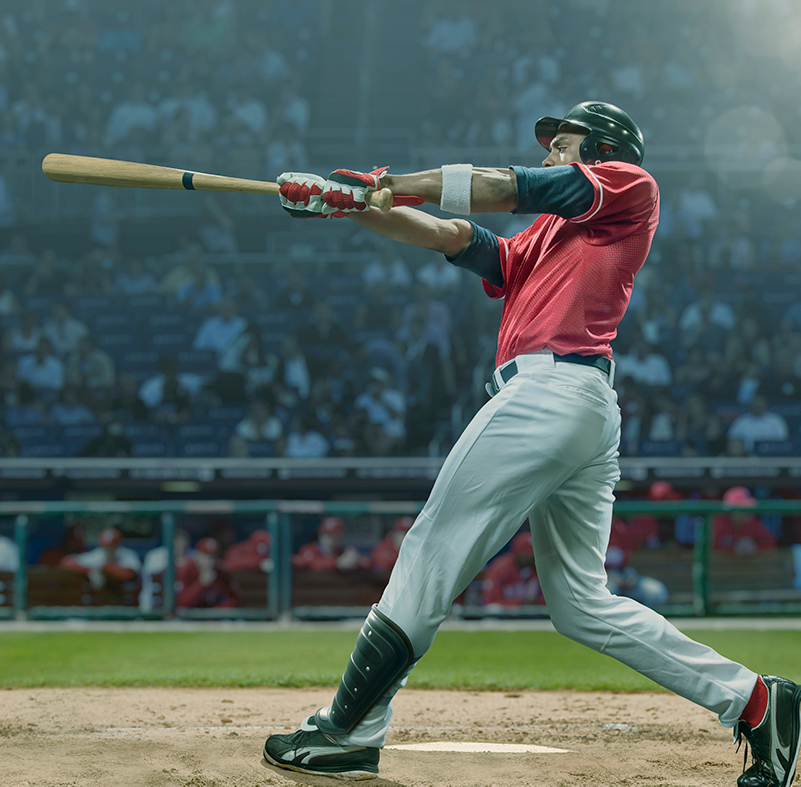Score a Home Run When Treating Baseball Injuries With Laser Therapy
Guest Blog Post by Perry Nickelston DC, NKT, FMS, SFMA
Baseball players throw – they throw a lot. They also get hurt a lot. During the action of throwing, players have to generate massive force from the foot all the way up, over, and out to the throwing arm. It’s this generation of force, coupled with the inability to slow these movements down, that can often cause injuries. Deceleration injuries are the most common in all sports.
Deceleration, otherwise known as eccentrics, is the ability to control movement. In baseball you have to control throwing, running, sliding, frequent start and stop motions and unexpected impacts. When an athlete has the inability to control force, musculoskeletal injuries occur. Force production is strength. Stability always precedes force production. Three of the most common injuries in the sport of baseball occur from an inefficient control of force and stability in the shoulder, knee, and hip.
Many major league baseball teams are currently using a technology called Deep Tissue Laser Therapy for their athletes. Using laser therapy over affected areas can decrease recovery time and accelerate athletes’ return to the field. Laser therapy stimulates injured areas to recover at a faster rate (through a process known as photobiomodulation) by increasing blood circulation and modifying certain cellular processes in a noninvasive manner. It may also be combined with other treatment modalities like therapeutic taping to complement these effects.
Here are 3 big treatment areas to cover when using laser therapy for baseball injuries:
The Thoracolumbar Fascia (TLF)
The thoracolumbar Fascia is a vitally important area for treatment of musculoskeletal injury/pathology and when developing a long-term strategy for recovery and regeneration treatment protocols. The TLF is a key component of the Posterior Oblique Subsystem of movement including your latissimus dorsi and opposite side glute max.
This is the primary force generation and stabilization system of your backside. If you want to throw you need to own this system and most athletes don’t. If there is a restriction in the TLF, the arms and legs need to work harder to generate force. Arms and legs are designed to amplify force, not generate it. When they are called on the do both the body is at greater risk of injury.
Treat the TLF with a dose of approximately 4000 to 5000 joules. Don’t just treat this region when it’s the primary source of pain either – it should be treated for any and all injuries of the body.
Popliteus
A major cause of knee injury is tightening of the popliteus muscle. The popliteus is the unlocking mechanism of the knee when walking, by medially rotating the tibia during the closed chains portion of the gait cycle, and it’s also used when sitting down and standing up.
The popliteus is often referred to as the ‘key’ to unlocking the knee since it begins knee flexion by laterally rotating the Femur on the tibia. It’s also attached to the lateral meniscus of the knee. Pain in the knee is often attributed to overuse of this muscle. The knee can’t unlock and it torques in itself injuring tissue. Deep tissue laser therapy to the posterior part of the knee with slight flexion will help relax the popliteus that is overworking. Every ACL injury should have the popliteus muscle evaluated.
Apply a dose of approximately 2,000 joules to the posterior part of the knee.
The Infraspinatus
The infraspinatus is one of the four rotator cuff muscles of the shoulder that give the glenohumeral joint stabilization. This muscle is often overused when someone does not have efficient function in the posterior oblique subsystem mentioned earlier. Over activity of the infraspinatus is the most common cause of pain in the anterior part of the shoulder. Its action is to externally rotate the humerus. The infraspinatus is also going to have eccentric control of shoulder internal rotation during the end part of a throw.
If this muscle is too tight, it will not allow full range of motion in the glenohumeral joint and the elbow may compensate.
Apply a dose of approximately 3000 J to the entire infraspinatus and posterior compartment of the shoulder.
Application of deep tissue laser therapy to these three areas will go a long way to helping recovery of baseball injuries. Laser therapy should play a major role in the comprehensive regimen of sports injury recovery and prevention.

Comments